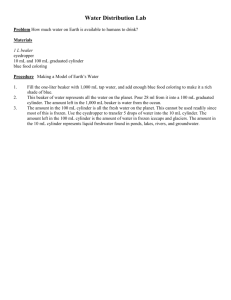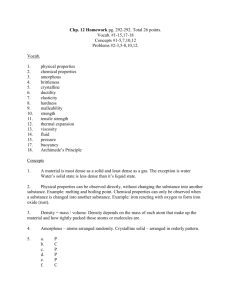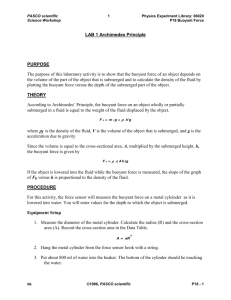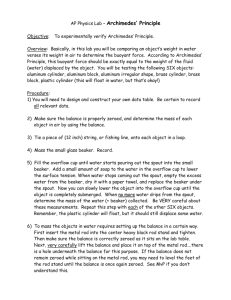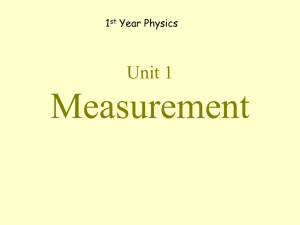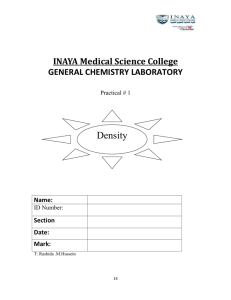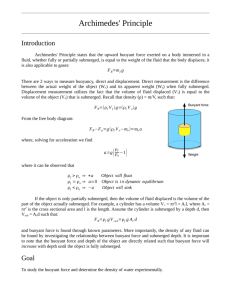Buoyant Force
advertisement
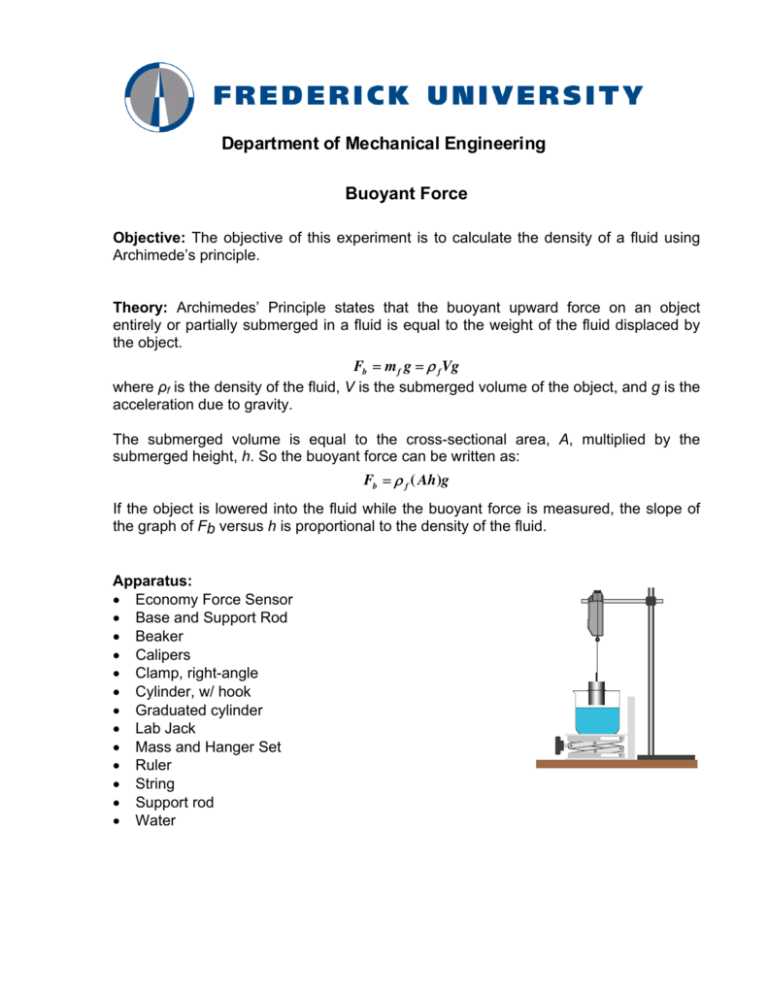
Department of Mechanical Engineering Buoyant Force Objective: The objective of this experiment is to calculate the density of a fluid using Archimede’s principle. Theory: Archimedes’ Principle states that the buoyant upward force on an object entirely or partially submerged in a fluid is equal to the weight of the fluid displaced by the object. Fb = m f g = ρ f Vg where ρf is the density of the fluid, V is the submerged volume of the object, and g is the acceleration due to gravity. The submerged volume is equal to the cross-sectional area, A, multiplied by the submerged height, h. So the buoyant force can be written as: Fb = ρ f ( Ah)g If the object is lowered into the fluid while the buoyant force is measured, the slope of the graph of Fb versus h is proportional to the density of the fluid. Apparatus: • Economy Force Sensor • Base and Support Rod • Beaker • Calipers • Clamp, right-angle • Cylinder, w/ hook • Graduated cylinder • Lab Jack • Mass and Hanger Set • Ruler • String • Support rod • Water Buoyant Force Procedure: Use the Force Sensor to measure the force on an object as it is lowered into water. S PART I: Computer Setup 1. Connect the ScienceWorkshop interface to the computer, turn on the interface, and turn on the computer. 2. Connect the DIN plug of the Force Sensor to Analog 300 Channel A. 3. Open the Data Studio 4. Calibrate the Force Sensor 5. Mount the Force Sensor on a horizontal rod with the hook end down. ci en ce W or p™ D A TA LO G G IN G IN S TR U C TI O N S APN AA scieSLO C ntifi GOCH c AN ho PA In scieSC terfa ce ntifi O c ks 500 NE LS S Worcien kshoce p™ Inte rfa ce PART II: First part of the Experiment 1. Lower the cylinder in the beaker until half of it is covered with water. 2. Record the force on the force sensor and also record the mass of the beaker using a weight-scale under the beaker. 3. Comment on the result PART III: Second part of the Experiment 1. Using the calipers, measure the diameter of the metal cylinder. From the diameter, calculate the radius and the cross-section area. Recall: 2 A = πR 2. Hang the metal cylinder from the Force Sensor hook with a string. 3. Put about 800 mL of water into the beaker and place the beaker on the lab jack below the hanging cylinder. The bottom of the cylinder should be touching the water. 4. Position the metric ruler next to the edge of the lab jack. Note the initial height of the top of the lab jack. PART IV: Data Recording and Analysis 1. Record Force vs. Depth data as you submerge the cylinder. 2. Plot the results and determine the slope of the Force vs. Depth graph. 3. Calculate the density of water by setting the slope equal to ρAg and solving for ρ. 4. Compare the calculated value to the accepted value by calculating the percent difference. Results and Calculations: Item Area of Cylinder Value Slope (from graph) Density of water (calculated) Density of water (accepted) Questions 1. Justify the result of the first part of the experiment with a simple force balance that includes the beaker and the cylinder. 2. How does your experimental value compare to the accepted value for the density of water? What is the percent difference?
